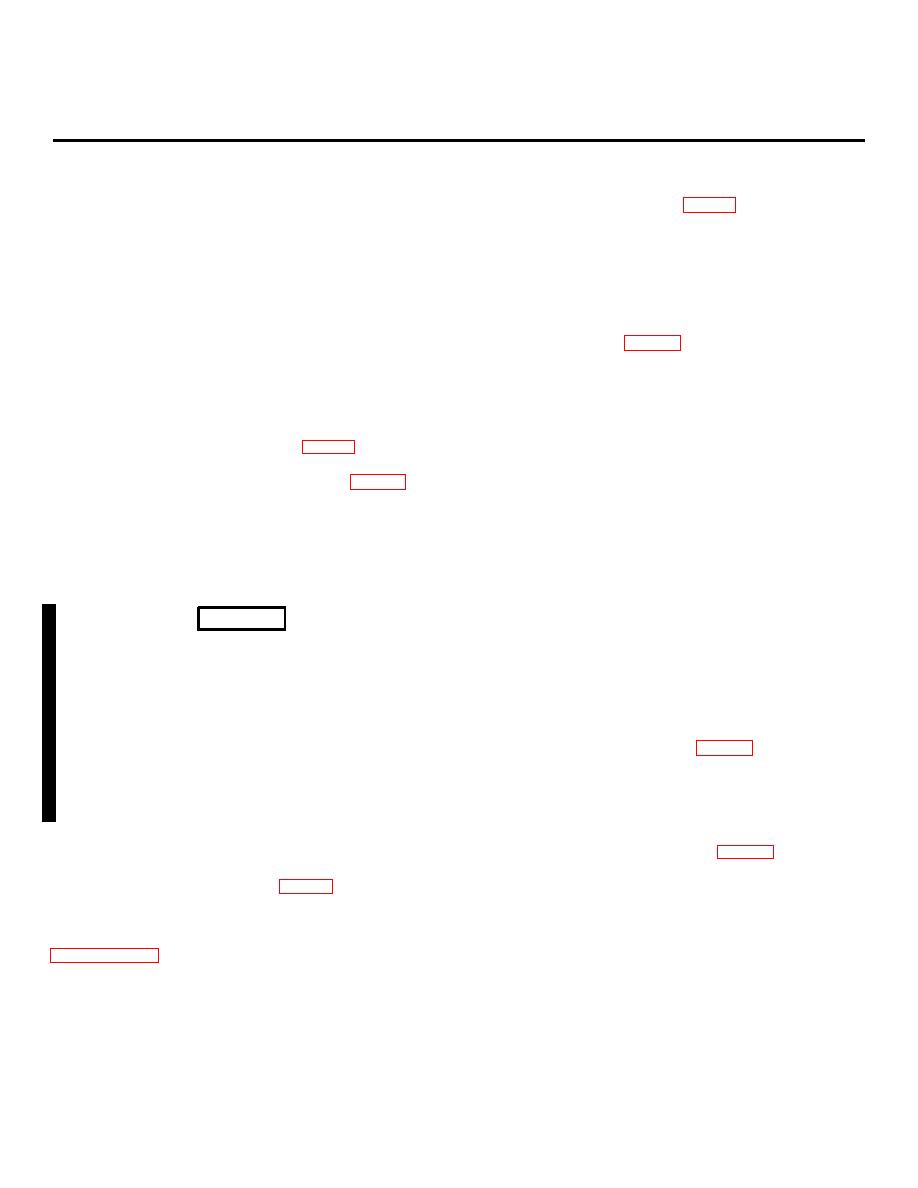 |
|||
|
|
|||
|
Page Title:
CHAPTER 4. ORGANIZATIONAL MAINTENANCE INSTRUCTIONS |
|
||
| ||||||||||
|
|
 CHAPTER 4
ORGANIZATIONAL MAINTENANCE INSTRUCTIONS
Section I. SERVICE UPON RECEIPT OF MATERIEL
4-1. Inspecting and Servicing the Equipment
(2) Fill the fuel tank (fig. 1-1) with gasoline.
Fuel tank capacity is 22.8 gallons.
(3) Check the engine coolant. Make sure the
a. Inspect the unpacked pump assembly as follows:
radiator is filled to the required level and that there is
(1) Inspect for cracks, dents, and other damage
sufficient antifreeze for the required operating
that may have occurred during shipment.
conditions. Normally, water that is suitable for drinking
(2) Inspect for loose or missing hardware.
is suitable for use in the radiator.
(3) Check the engine for leaking.
(4) Check the oil level in the engine crank- case,
(4) Inspect the suction and discharge ports for
using the dipstick (8, fig. 3-3). Add oil if the level is
damaged ends and butted threads.
near the low mark on the dipstick.
(5) Using the crank, turn over the engine with
the battery disconnect switch and ignition switch in the
4-2. Installation
OFF positions. The engine and pump must turn freely
without binding or scraping or other signs of faulty
a. Locate the pump assembly on a solid, flat
operation.
surface as close as possible to the source of supply.
(6) Inspect the control panel (fig. 1-1) for
Allow ample room around the pump to support the
damaged controls and instruments.
suction and discharge lines and to enable you to service
(7) Remove the engine side panels (fig. 1-2).
the pump as required.
Inspect all hoses for abrasions, cracks, fraying, and
other damage. Check tubing for kinks, flatted areas or
CAUTION
other damage.
The tilt of the pump when spotted for
(8) Tighten all loose hardware. Report any other
operation shall not exceed 15
damage to the required authority.
degrees from horizontal. An angle of
b. Service the pump assembly as follows:
more than 15 degrees will result in
WARNING
inefficient operation of the engine
lubrication system and may cause
Do not smoke or use an open flame
severe damage to the engine or
in the vicinity when servicing the
automatic shutoff due to low oil
battery. Batteries generate hydrogen
pressure.
gas, which is highly explosive.
b. Before the pump is disengaged from the towing
NOTE
vehicle, remove the lock pin (3, fig. 4-1) that holds the
Use electrolyte with a specific gravity
front leg assembly (4) in the raised position and lower
of 1.280. Do not use tropical
the leg. Reinsert the pin to lock the leg. Install the
electrolyte, which will reduce battery
chock blocks under the wheels to prevent the unit from
reserve capacity.
rolling. Disconnect the electrical plug and the safety
chains (2), then disengage the tow bar (1) from the
towing vehicle. Pull out the pin (1, fig. 4-2) that holds
(1) If you are preparing the pump assembly for initial
the leg (2) of each rear stand and pull down the leg so
use, open the container of electrolyte and fill the dry
that it is in firm engagement with the ground. Reinsert
charge battery in the battery box (fig. 1-1) so that the
the pin to lock the position of the leg. The pump should
electrolyte is up to the required level. If possible,
now be firmly positioned so that it will not rock or
charge the battery for 10 or 15 minutes before
wobble.
connecting and applying the starting load. Refer to
sure you have securely connected the battery. Note that
the electrical system has a negative ground.
Change 1 4-1
|
|
Privacy Statement - Press Release - Copyright Information. - Contact Us |